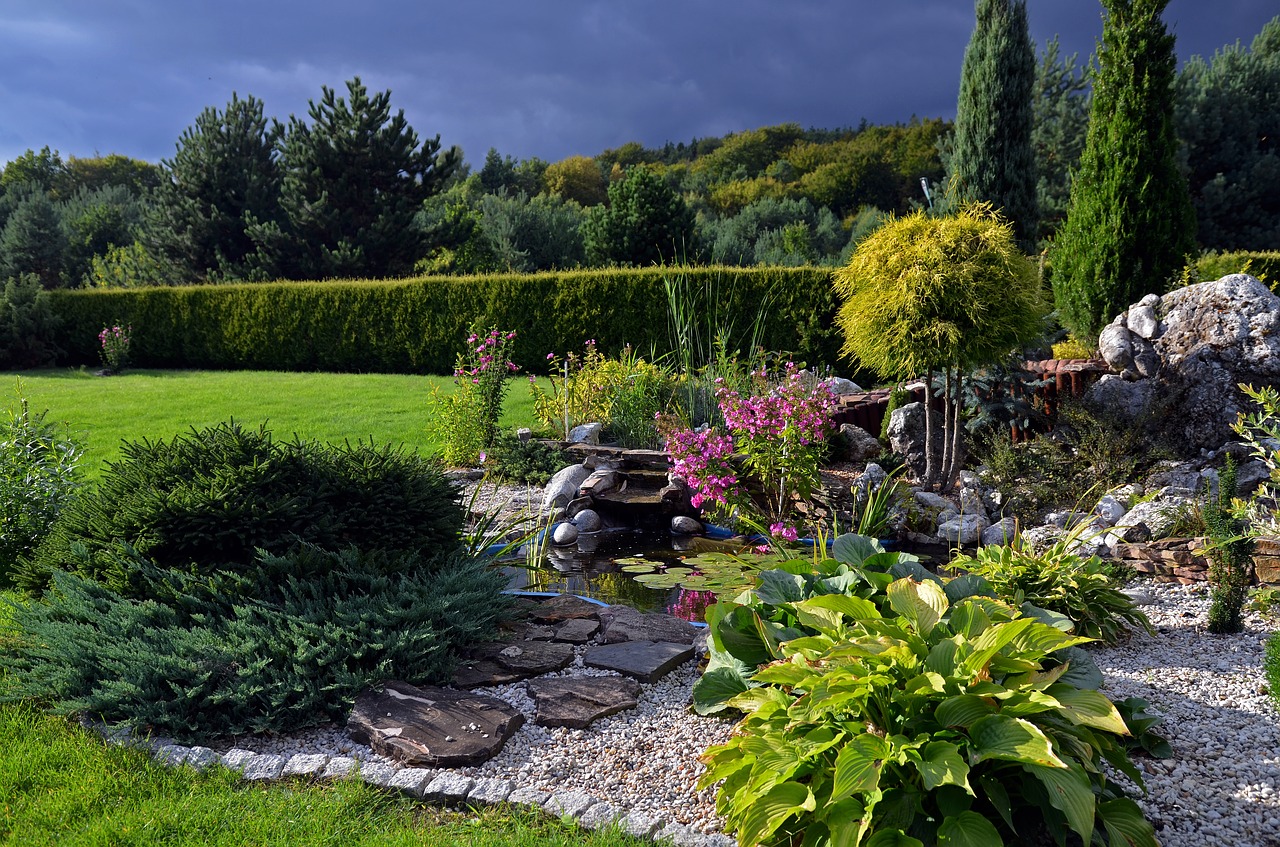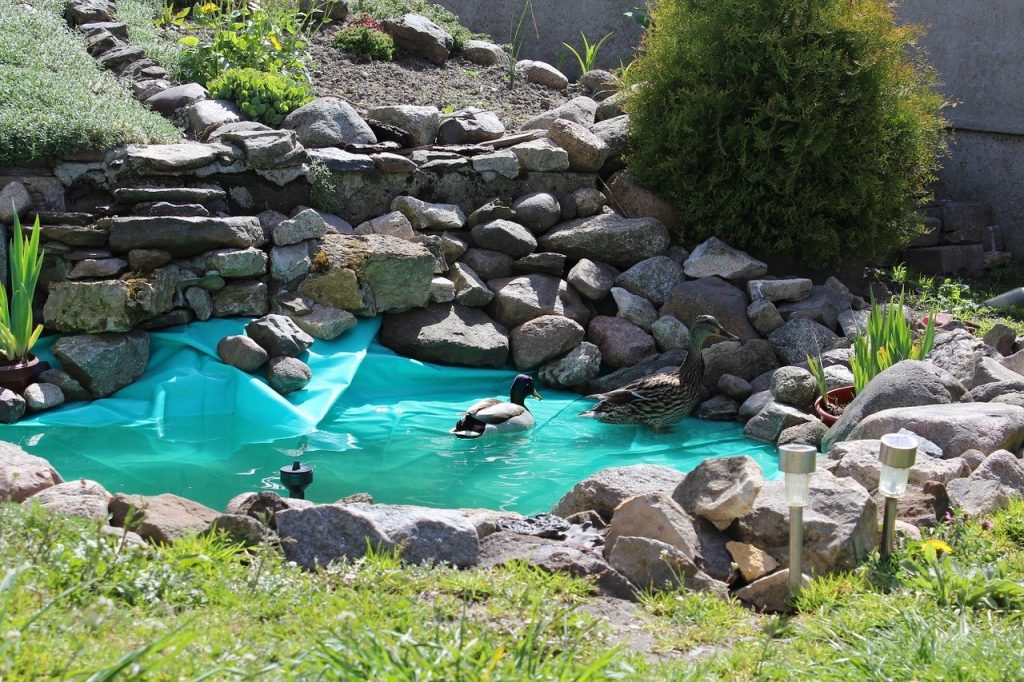
Summer is fast approaching and it’s time to start planning your backyard oasis not only with plants and flowers, but also with the possibility of adding a pond design. If you enjoy spending time outdoors during the warm summer months and you already have a garden, it’s a good idea to add a pond to your garden
Designing an entire landscape, including a pond, would be ideal, but most installed ponds are customized to fit the existing scenery. Therefore, you should carefully consider the relationship of the pond to the rest of your landscape before starting work
The size of the pond is very important. The smaller the pond, the more influenced it will be by seasonal and daily temperature fluctuations and the less stable the aquatic environment will be. It is believed that the minimum size for a healthy, sustainable pond is about 4.5 square feet in area.
>> Read also: How to install a garden shower?
Another important factor for the overall health of the pond is the depth – it should be between 45 and 60 cm. A greater depth is not necessary and can be a maintenance hazard. If you don’t have the space for an adequate area, you can compensate for this to some extent by increasing the depth of the pond.
If you cannot afford to use a large space or digging is too much work, all is not lost. Consider a barrel-shaped water garden. With the right choice of plants and winter care, it can be a viable solution

If a pond is to reach its potential, the shape should be compatible with those in your garden. If it has a formal style, the angles, lines and smooth curves should be repeated in the shape of the pond, preferably in a concentric pattern. If your landscape is informal, this freedom of line and form should be reflected in a less geometric design. If your pond is constructed with flexible liners, you have almost unlimited options; however, if you choose to use a pre-formed shell liner, your options are more limited.
>> Read also: Pre-formed ponds – hit or miss?
The size of your pond should be a matter of proportion. If it’s going to occupy a prominent spot, its size should reflect that by taking up most of the area. If it is a nuance or accent, it should be proportionate to the other elements of the garden.
Edging materials help tie the water feature into the overall scheme of the garden. You can use a material such as brick, stones, steel edging or wood to accent the pond
Use the colors, textures, and forms of individual edging elements to complement or enhance the position your pond takes in the overall landscape hierarchy. In any case, these materials should complement any edging materials already in place. Decide early in the design phase what type of edging will be used. This decision has a significant impact on the construction phase.
Material selection should consider cost, expected material life, installation requirements, availability in the area, and how they may blend with existing materials in your environment. Liner is generally the most important and expensive component of a water garden. Here are some examples of liners in order of shortest to longest life span:
Choosing plants for a pond is, of course, one of the main design considerations. However, as mentioned earlier, most ponds are adapted to the existing landscape, so for best results, the plants chosen for the pond must coordinate with those already in the garden. Some design elements to keep in mind when trying to match or contrast a pond to the landscape are: overall plant texture, bloom color and length, leaf type and texture (including diversity effects), height, and overall form